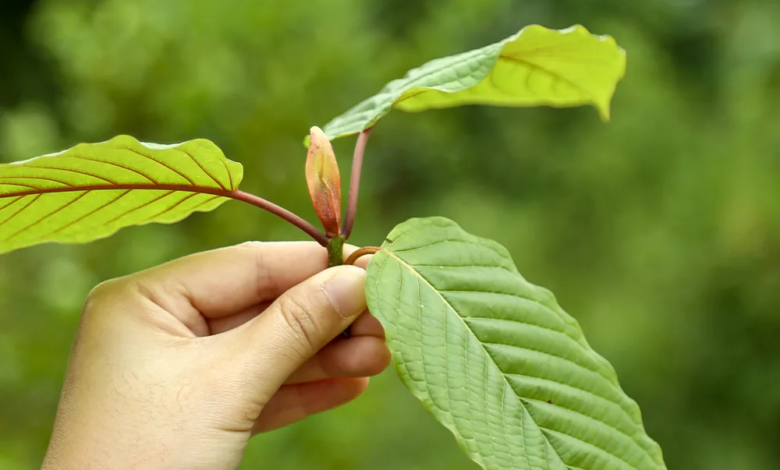Coevolutionary Relationship between Kratom & Humans

According to standard evolutionary theory, human proclivity for substance use results from a mismatch between emotional systems that arose in the absence of pure substances or direct means of drug administration and their presence in the current environment. The major goal of this review is to demonstrate that, contrary to popular belief, humans have a million-year-old coevolutionary connection with psychoactive plant chemicals. We argue that this ‘deep time’ relationship is self-evident in both the extant chemical-ecological adaptations in mammalian species that enable them to metabolize psychotropic plant substances and the framework of plant defensive chemical compounds that have evolved to mimic the function and structure of mammalian neurotransmitters.
A THEORY OF THE RELATIONSHIPS BETWEEN KRATOM AND HUMANS
Coevolution is defined as the process through which two or more species coevolve in response to one another. It is more likely to arise in animals that interact and share a habitat. And, because we’ll be addressing kratom specifically, we’ll be considering coevolution mostly through the lens of plant species.
The link between blooming plants and pollinators is a well-known example of coevolution in plants. More precisely, for millions of years, bees and blooming plants coevolved. Bees acquire food or nectar, whereas plant species benefit from pollen distribution and the capacity to persist in one location.
However, coevolutionary partnerships are not always advantageous to both parties. Coevolutionary processes include the following:
- The predator-prey relationship.
- The parasite-host relationship.
- Competitive relationships.
- Mutualistic relationships.
- Bees pollinating a flower
Bees and pollinators are classified as “mutualistic species,” which means that both sides benefit from the coevolutionary connection. Unfortunately, little devoted study on coevolution in plants or animals exists. However, last year, scientists proposed possible co-evolutionary links between humans and plants (which we’ll discuss further in a bit).
To ascertain if kratom and humans coevolved, it is necessary to understand how natural selection affects interacting species, including selected pressures and geographic ranges. Let us quickly review our ecological jargon!
Is Human Activity Influencing Kratom Plant Coevolution?
Consider for a minute the human-kratom connection: When alkaloids generated by kratom leaves are ingested, they give benefits to humans; as a result, humans plant new kratom trees, which benefits the kratom plant species.
- Humans have evolved to benefit in some manner from kratom’s alkaloids. People have loved to buy green kratom for emotional and mental health benefits and have evolved to produce alkaloids to spark human interest in the plant.
- Human kratom planting rates act as a selection pressure, influencing how kratom adapts and improves its survival. For instance, according to a study published last year, Fritillaria delavayi plants in China boosted their camouflage levels in areas that were collected more intensively.
- When it comes to kratom, on the other hand, the coevolutionary process is heading in the opposite direction. Kratom plants appear to be evolving to accommodate rather than oppose human interest.
Additionally, assume that new nations develop kratom in response to the herb’s expanding popularity. In such a situation, the plant species will be able to expand its geographic range beyond the confines of Southeast Asia, significantly increasing its chances of survival. Plant dispersal is a common human practice that entails relocating a species to a new environment distinct from the one in which it was identified.
Kratom & Society
Ironically, the more we get away from nature as a culture, the more connected some of us feel to it. Fortunately, there are several plants that humans have effectively tamed, which means that even after years of environmental degradation, we may still benefit from some of nature’s bounty. While marijuana has a wonderful history of dynamic genes and coevolution alongside humans — the THC receptors in the brain are strangely specialized in their fit with cannabis alone – kratom has historically appeared to be less geared toward supporting people. Nonetheless, these plants have a parallel history in terms of their enormous value and how they are seen by culture and society.
Kratom & Cannabis Prices
Numerous families and people have suffered as a result of cannabis prohibition. Parents have been separated from their children for possessing a single joint, and critically ill patients have been denied access to a potentially life-saving resource. Millions of Americans believe that marijuana improves them in some manner.
In essence, it appears as though the stigma surrounding cannabis is more than a war on drugs – it is a war on its users. As public opinion has shifted in favor of cannabis, we witness a slew of celebrities, politicians, and influencers advocating for its legalization, seeking to free those wrongly imprisoned for their affiliation with it.
Between kratom and cannabis, kratom has had a much smoother road with significantly less negative media coverage. While certain groups are attempting to discredit kratom, cannabis has paved the way for people to look more critically at the potential advantages of both plants.
Selection through Natural Means
Natural selection was taught to the majority of us in school. It is the process by which plants adapt to and change as a result of their environment. Natural selection is believed to be the driving force behind all evolution (and coevolution). On the other hand, natural selection is only one component of evolution.
Conclusion
As stated in the headline, the coevolution of plants such as kratom and humans is purely hypothetical. There is little study on the coevolutionary processes between humans and plants and much less research on kratom in general. However, it is critical that we pose such questions as part of our continuous effort to comprehend the enthralling kratom tree and its alkaloids. Consider cannabis as a final example of human-plant coevolution. In the 1960s, cannabis cultivars seldom contained more than 5% THC. Indeed, cannabis had an average THC concentration of around 0.5 percent. However, modern cannabis strains often reach 30% THC, which may be a coevolutionary feature acquired as a result of greater human usage.
The same might be true with kratom. If the THC level of cannabis increased by 29.5 percent in about 60 years, who is to say the same cannot happen with kratom’s alkaloids? Of course, further study in both kratom and cannabis is necessary to completely comprehend this occurrence. However, coevolution between plants and humans is critical. Understanding how natural selection—along with other variables such as geographic ranges—influences our flora and wildlife enables us to develop a deeper appreciation for the natural world, avert climatic disasters, and boost the potency of our natural kratom!
For more valuable information visit the website





